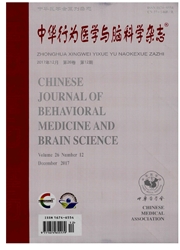

 中文摘要:
中文摘要:
目的研究视交叉上核(suprachiasmatic nucleus,SCN)脑片对共培养的NIH/3T3成纤维细胞中分子时钟的诱导作用。方法10d龄SD大鼠,取SCN脑片,与NIH/3T3成纤维细胞共培养。连续24h,间隔6h收获细胞,抽提细胞总RNA,实时定量RT—PCR检测时钟基因Perl和Rev—erbα mRNA表达规律。结果10张SCN脑片与NIH/3T3细胞共培养6d可诱导细胞中Rev—erbα和Per1节律性表达(P〈0.01);Rev—erbα和Perl的表达高峰分别为CT5和CT11。减少共培养时间至2d或脑片数量至2片,仍可诱导Rev—erbα的节律性表达(P〈0.05)。而诱导per1的节律性表达至少需要6d共培养时间和6张脑片(P=0.031)。结论成功建立SCN脑片与细胞共培养模型,为研究SCN对外周组织细胞的调控打下基础,Rev—Erbα和Perl的波动表达并非同时发生,前者对SCN信号更加敏感。
 英文摘要:
英文摘要:
Objective To study whether suprachiasmatie nucleus (SCN) slices are able to induce the molecular oscillations in NIH/3T3 fibroblast. Methods SCN slices from 10-day-old SD rat and NIH/3T3 cells were co-cultured in a serum-free condition. 24h mRNA profiles of Perl and Rev-Erbα were measured in NIH/3T3 cells using real-time PCR. Results After co-cultured for 6 days,ten SCN slices can induce the significant daily oscillation of Perl and Rev-Erba mRNA expression in NIH/3T3 cells (P 〈 0.01 ). The peak time Rev-erbα and Perl were at CT5 and CT11 respectively. Rev-Erbα oscillations were significant even with two SCN slices and 2 days co-culture (P 〈 0.05 ). In contrast, Perl expression fluctuation was not observed until more than 6 days of coculture and with six SCN slices (P = 0.031 ). Conclusion Diftusible signals release from SCN slices can regulate molecular rhythms in cultured fibroblasts. Rev-Erbα and Perl don' t start to oscillate at the same time,and Rev- Erbα is more sensitive to SCN signal.
 同期刊论文项目
同期刊论文项目
 同项目期刊论文
同项目期刊论文
 期刊信息
期刊信息
